5 MORE of Iowa's most invasive species (and how to get rid of them)
Posted on May 26, 2016 in Blog
We listened to your comments! Here are five more threatening invasive species in Iowa.
Autumn Olive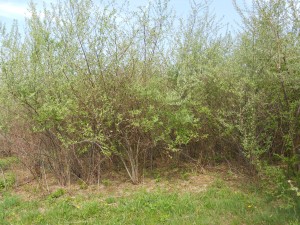
Identification: This shrub or small tree holds dark green, oval-shaped leaves, small, yellow or white flowers and bountiful reddish/pink fruits.
Threat: Autumn Olive can survive in areas with poor soil quality, including along roads, pastures, open woodlands and prairies. The plant can survive without much water and is known to invade woodlands or grasslands.
Removal: Small, sprouted plants can be pulled by hand, while larger shrubs require cutting. Apply herbicide to the leaves or freshly cut stumps, being careful not to affect native plants.
Creeping Charlie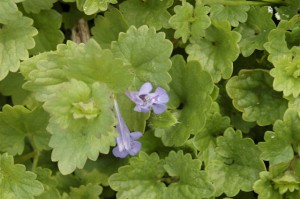
Identification: Round, shiny leaves with a scalloped edge, and small purple flowers.
Threat: Although creeping charlie oftentimes doesn’t pose much of a threat to natural areas, this fast-growing ground cover can easily overtake grass, native gardens and landscaping in your yard.
Removal: There are several different ways to combat creeping charlie, and the best method depends on where the weed is located. In small areas, such as a flower bed, hand-removal can be beneficial, but make sure to completely remove the root system or the plant can regenerate. A thick layer of mulch in between plants can also choke out the weed. For grassy areas, herbicide treatment in fall and spring works well. Direct competition from a native prairie plot or garden has also proven to be successful. Keep in mind that creeping charlie is a persistent plant, and it usually requires a few years to completely eradicate.
Wild Parsnip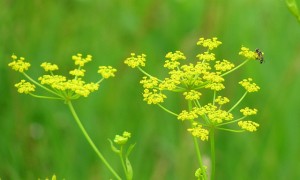
Identification: Large, celery-like leaves and stems with small, yellow flowers. Usually two to five feet high.
Threat: Wild parsnip is typically found along roadsides, in pastures and prairies or on field edges. They produce many seeds, which allows the plant to easily spread. The weed’s fluids also contain psoralen, a substance that causes skin to burn when exposed to sunlight. These burns often lead to severe blistering.
Removal: Before attempting to remove wild parsnip, be sure to cover up any exposed skin. Then, work to eliminate seed production of the plant. This can be achieved through hand-pulling, digging out the roots or repeated mowing when the plant is flowering.
Japanese Knotweed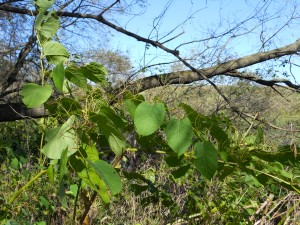
Identification: Hollow, brown, bamboo-like stems with greenish-white flowers. Mature plants can grow up to 10 feet tall.
Threat: Japanese Knotweed was introduced in the late 1800’s and was used for landscaping and erosion control. The plant has deep roots–up to nine feet–and spreads quickly. Knotweed colonies can grow in such dense clusters that they crowd out any other native plant life. The state of Iowa passed a law in 2013 prohibiting the import or sale of certain invasive ornamental plants, including Japanese Knotweed.
Removal: The plant should be cut down and the stump treated with herbicide. This method prevents re-sprouting, but may need to be done more than once. Small infested areas can also be covered with tarp to hinder growth.
Leafy Spurge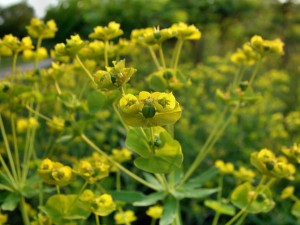
Identification: This branching perennial features smooth stems and yellow flowers.
Threat: Leafy Spurge shades out other plants, devours available water and nutrients and releases toxins that prevent other plants growth. The herb invades prairies, savannas, pastures, fields and roadsides.
Removal: Introducing natural insect enemies of leafy spurge has been proven effective in some areas, but this requires professional assistance. Systemic herbicides are also effective, especially when applied in June as flowers and seeds are developing, or when the plant is moving its nutrients to the root in September.
Looking to learn more about invasive species? Contact Land Stewardship Director Ryan Schmidt at rschmidt@inhf.org or 515-288-1846, ext. 13.For more information about these species and other invasives in Iowa, check out the Iowa DNR’s guides.
Photos courtesy of Frank Mayfield, Annie Roonie and Paw Paw via Flickr Creative Commons.